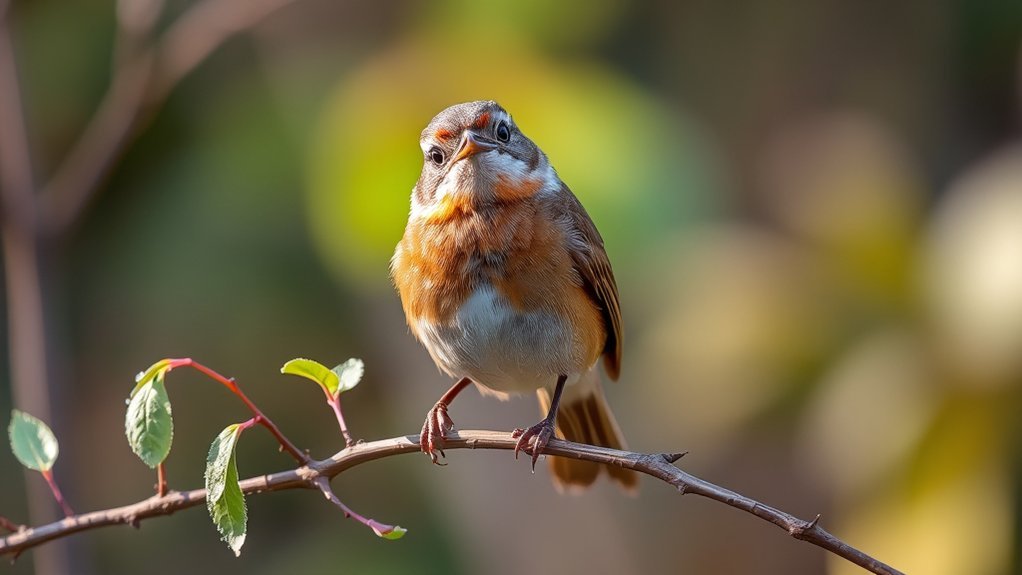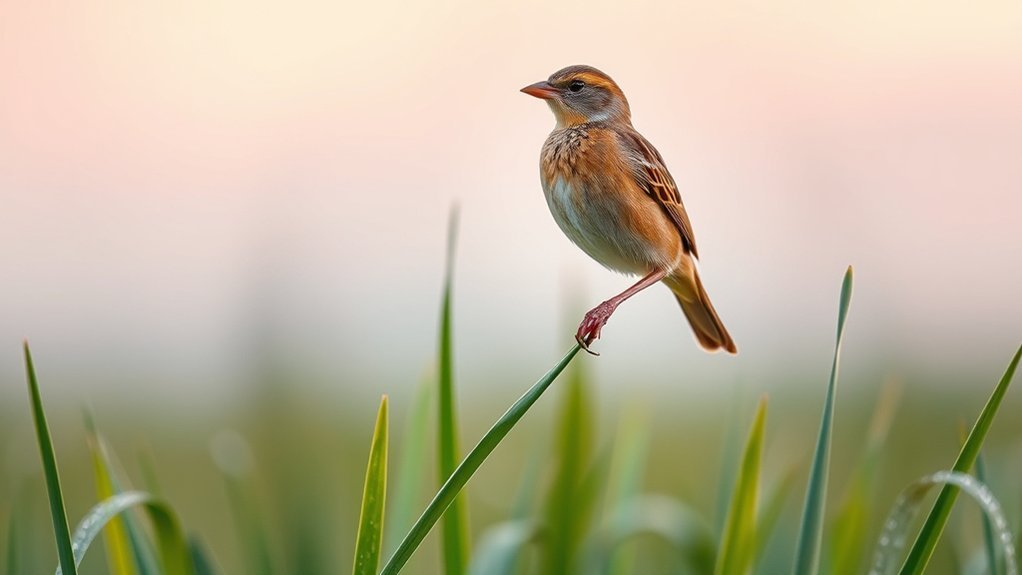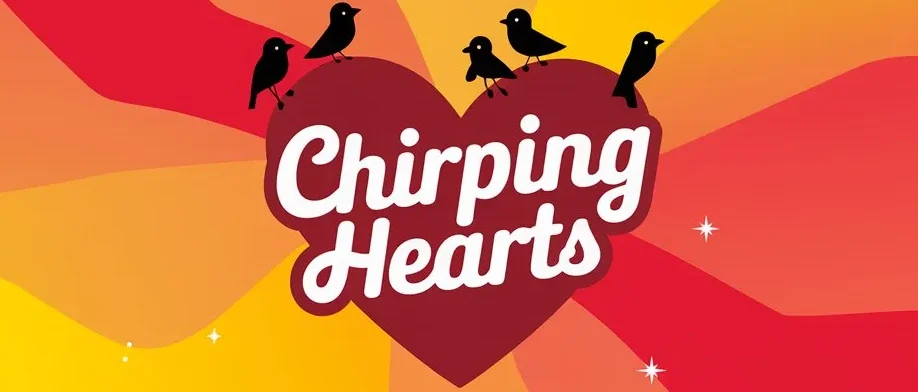Four-Letter Bird Names: A Quick Guide to Short Avian Names
Four-letter bird names can tell us a lot about different birds. These short names help us quickly recognize and understand each bird's unique traits. For example, the crow is known for being smart and adaptable. The swan is famous for its beauty and grace.
Thinking about these names can help us learn more about how these birds interact with each other. Each name gives us a hint about what the bird might be like. So, when you see a bird with a four-letter name, take a moment to think about its characteristics and what makes it special. This little exploration can bring us closer to these amazing creatures!
A Quick Overview
Here's a guide to some common four-letter bird names.
Wren: Wrens are small birds famous for their loud songs. They belong to the family called Troglodytidae and come in many kinds.
Tern: Terns are smart birds that travel very far. They like to nest in quiet, safe spots along the coast to keep their babies safe.
Swan: Swans are big and beautiful birds. They often stay with the same partner for life. They need our help because their homes are threatened.
Rook: Rooks are smart birds that like to socialize. They show off their skills in finding food and talking to each other.
Myna: Mynas are also social birds. They have great ways of communicating and are very good at adapting to their surroundings.
These four-letter bird names highlight just a bit of the wonderful variety in the bird world!
Wren

Wrens are small birds from the family Troglodytidae. There are about 80 different kinds of wrens found in many places. You can see wrens in thick bushes, low shrubs, and along the edges of forests.
They like spots that offer them good cover to build their nests and find food.
Listen for their songs! Wrens have strong, beautiful songs that can be heard from a long way off. These songs help them mark their territory and attract mates.
Watching wrens can really help you learn more about these interesting birds. So, next time you're outside, take a moment to listen. The wren's unique voice can tell you a lot about the lively ecosystem around you!
Tern
Terns are beautiful seabirds. They've striking feathers and can fly acrobatically. Terns travel long distances. They migrate thousands of miles from their breeding areas to their winter homes. You can find them mainly along the coast, like on sandy beaches, in estuaries, and in wetlands. These places are rich in fish, which terns love to eat.
Terns like to nest in quiet, remote spots where there are few predators. This keeps their eggs and chicks safe. If you want to see terns in the wild, knowing where they like to nest can help.
Watching how they behave and migrate can also make your birdwatching more fun. When you see a tern, you appreciate its beauty and the important role it plays in nature. Each sighting can make you feel connected to the environment around you.
Crow

Crows are interesting birds that live in many places. They're very good at adapting to different environments.
Crows show amazing problem-solving skills that surprise many people. In cities, they've learned how to find food by scavenging. This means they can search for scraps and leftovers easily.
Crows can even use tools! For example, they use twigs to pick insects from tricky spots. This shows how smart they really are. They often live in close families, which shows they care about each other.
Crows also have a unique way of talking. They make different sounds to warn each other about danger or to share where food is located.
Swan
Swans are beautiful birds that you can often see swimming gracefully on lakes and rivers. They stand out because of their stunning looks and smooth movements.
When swans want to find a partner, they show special behaviors. They swim together in sync and preen each other, which helps them bond. Many swan species choose one mate for life, which shows how committed they're to each other.
It's important to know that not all swan species are doing well. Some swan populations are stable, but others are in danger because of habitat loss and pollution.
Lark

Larks are interesting birds known for their beautiful songs and quick flying. They live in open grasslands and meadows.
It's important to learn about their migration patterns to understand their role in nature. Most lark species move seasonally, flying hundreds or even thousands of miles between where they breed and where they spend the winter.
These birds often travel along routes that have food for them. This shows how they can adapt to their surroundings.
Larks use songs and calls to communicate, and these sounds can be quite different between species. They use their voices to mark their territory and to attract mates. This helps show their social structure.
If you watch larks where you live, you can connect more with nature. You can also learn about the balance of the ecosystems they're part of.
Observing larks makes it easier to appreciate the beauty of bird life around us.
Dove
Doves are gentle birds known for their soft cooing sounds. Many people see them as symbols of peace and love. This idea goes back to ancient times, when doves appeared in stories and religions.
In Christianity, for example, doves represent the Holy Spirit, which connects them to purity and hope.
There are over 300 types of doves around the world, each with its own special traits. Some common examples include the mourning dove and the exotic Nicobar pigeon.
These birds live in many places, such as forests, grasslands, and cities. Learning about different dove species helps us appreciate their importance in nature and culture.
Finch
Finches are small, colorful birds that belong to the family Fringillidae. They've strong bodies and beaks shaped for eating seeds. There are many kinds of finches, like the common house finch and the bright goldfinch. Each type has its own special features, but all finches help spread seeds in their homes.
When you watch finches, you'll see they love to eat seeds, especially from grasses and flowers. They often hang upside down or cling to branches to grab their food. This shows how skilled they're at finding meals.
Learning about finches can help you appreciate their role in nature. Watching them can make you feel more connected to these charming birds.
Enjoy your time outside and keep an eye out for these lovely avian friends!
Kiwi
Kiwis are special birds from New Zealand. They're small, flightless, and easy to spot because of their long, slim beaks. Kiwis like to come out at night. They live in thick forests, scrublands, and grasslands. There, they dig in the ground for insects, worms, and fruits to eat.
Kiwis need healthy homes to live in. Sadly, their homes are getting smaller because of cities growing and new animals, like cats and dogs, hunting them. This makes it tough for kiwis to survive.
To help these birds, people are working hard on conservation. They control the number of predators, heal the land where kiwis live, and set up breeding programs so more kiwis can be born.
You can help too! Join local conservation efforts. By supporting these projects, you protect kiwis and connect with nature in New Zealand. It's a great way to feel a part of something important!
Gosh
Goslings are baby geese, and they're really interesting! They grow and change a lot in their first few weeks. Let's look at some important things about goslings and where they live:
- Family Ties: Goslings stay close to their parents and siblings. This helps keep them safe from dangers.
- What They Eat: Goslings like to eat grasses and plants from the water. This food helps them grow quickly.
- Where They Live: They love wetlands and grassy areas. These places give them shelter from predators.
- Talking to Each Other: Goslings make sounds to call for their parents or show when they're scared. This helps them stay together as a group.
All these traits help goslings survive and show us how they live in their homes.
Isn't it amazing to learn about these little birds?
Heron
Herons are beautiful wading birds. They've long legs and long necks, which help them catch food in the water. You can find herons in places like marshes, wetlands, and by the shore. These spots are great for finding fish, frogs, and crab-like creatures.
Herons are skilled hunters. They stand very still and wait for fish to swim by. When the time is right, they strike quickly with great skill.
If the fish aren't around, herons change what they eat. They might catch insects or small mammals instead.
Watching herons in the wild is a treat. You can see how graceful they're as they move and hunt. Nature lovers really enjoy observing these birds because they play an important role in our ecosystem.
Seeing herons in action makes you appreciate wildlife even more.
Rook
Rooks are special birds that belong to the crow family. They're smart and very adaptable, meaning they can live in different places and find food easily.
Here are some interesting facts about their nests:
- Nesting in Groups: Rooks like to nest in big groups, called colonies. This helps them stay social and connected with each other.
- Choosing Tall Spots: They prefer to build their nests high up in tall trees or on high structures. This keeps them safe from many predators.
- Collecting Materials: Rooks gather different materials to make their nests. They use twigs, grass, and even things made by humans. This shows how resourceful they are.
- Pairing Up: During nesting season, rooks often stick to one partner. This helps them work together to raise their young.
In stories and folklore, rooks are seen as smart birds. They're often thought of as protectors of spiritual things.
Learning about rooks can help you appreciate these amazing birds more and feel a closer bond with nature.
Dunn
Dunns are small birds that move quickly and are known for their lively sounds and actions. You can often find them in grassy areas, wetlands, and places with scrubby plants. They like spots with thick cover where they can search for food and build their nests.
Dunns usually look for food in pairs or small groups. This helps them stay safe from predators while they look for insects and seeds to eat. They also enjoy singing. Sometimes they sing together in duets or a solo to claim their space or attract a partner.
Dunns can fly very well. Their quick movements help them navigate through trees and bushes easily. Learning about where dunns live and how they behave can make birdwatching more fun and interesting.
These charming birds add a special touch to our natural world, connecting bird lovers everywhere.
Myna
Mynas are interesting birds that many people notice because of their looks and sounds. They can live in all kinds of places, like cities and fields, showing how well they can adapt.
Here are some cool facts about mynas:
- Social Groups: Mynas usually hang out in flocks and have strong friendships with each other.
- What They Eat: They like a mix of foods. Mynas eat insects, fruits, and even food scraps they find.
- Where They Build Nests: You can spot mynas nesting in trees, buildings, or sometimes even on the ground. They're flexible about where they live.
- Talking Skills: Mynas make many sounds. They don't just call to each other; they can also mimic human voices and other bird calls.
Learning about mynas can help you appreciate how clever and adaptable these birds really are!
Frequently Asked Questions
What Is the Origin of Four-Letter Bird Names?
Four-letter bird names are interesting! They are short and easy to say. You can find these names in many languages. Each name often tells a little story about the bird's habits, colors, or sounds.
For example, "frog" sounds like it jumps around. The name "crow" fits because crows are known for their loud calls. By looking at these names, we can learn about the birds and how people named them.
These short names show us how people connect with nature. They are simple and meaningful, making it fun to share and remember. Learning about four-letter bird names adds a little extra joy to our love of birds.
Are There Any Cultural References to These Birds?
Birds appear in many stories and traditions. They often stand for ideas like freedom, wisdom, and change. When birds show up in tales, they help us connect to our own feelings and experiences. These symbols create rich meaning and make the stories more interesting.
How Do Four-Letter Birds Compare in Size?
When you look at four-letter birds, their sizes can be very different. Some birds are light and quick. Others are heavier and bigger. This shows how each bird has special traits that help them thrive in their own environments.
For example, the "dove" is light, while the "hawk" can weigh a lot more. This variety in size helps each bird adapt to its surroundings and find food easily. So, the next time you see these birds, think about how their sizes help them in nature!
What Are Common Habitats of These Birds?
These birds live in many different places. You can find them in wetlands, which are areas with lots of water. They also like forests, where there are plenty of trees.
When these birds migrate, or move from one place to another, they can adapt to different environments. This means they can live in many types of areas. Their ability to adjust makes them interesting to birdwatchers and nature fans.
Whether in a swamp or a wood, these birds show us how versatile they can be!
Can These Birds Be Found Worldwide?
Yes, you can find these birds all over the world. They move around a lot, which affects where they go. They eat in different ways, too, which helps them live in many places. By learning about these birds, you can see how important they are to nature and how they connect with different parts of the globe.

Joyce is the passionate founder of Chirping Hearts, a website dedicated to sharing her love for birds and providing valuable information about avian life. With a background in ornithology and years of experience in birdwatching, Joyce aims to inspire others to appreciate the beauty and diversity of birds. Through her engaging articles and guides, she hopes to foster a community of bird enthusiasts who share her enthusiasm for these incredible creatures. When she’s not writing, Joyce enjoys exploring nature trails and observing birds in their natural habitats.







